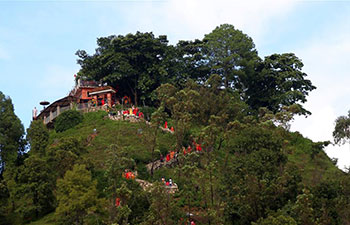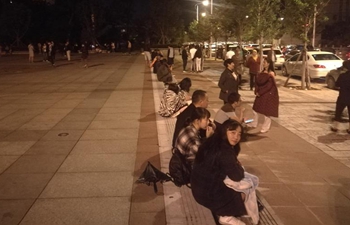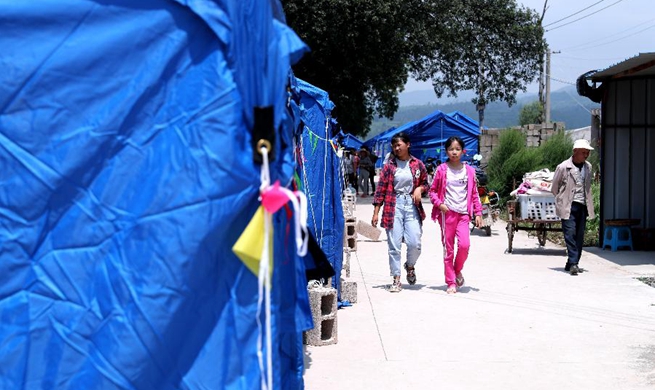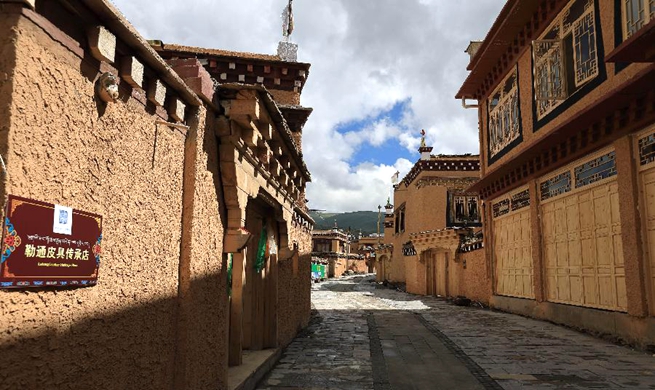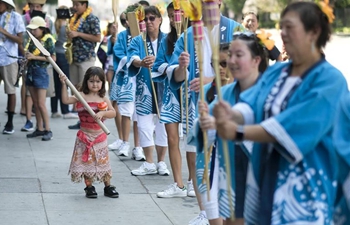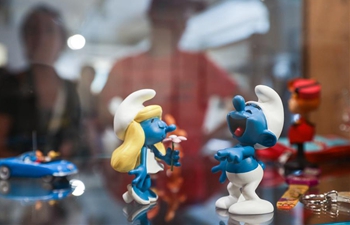BEIJING, Aug. 14 (Xinhua) -- A large number of crystals with high purity have been found in purple-gold glazed porcelain excavated at the Palace Museum, also known as the Forbidden City, in Beijing.
The crystals are dispersed across the glazed surface to a depth of approximately tens of micrometers.
They measured one to three micrometers in length and less than one micrometer in width, with a thickness of approximately 150 nanometers, according to Lei Yong, an official at the Palace Museum.
The formation of the crystals contributed to the reddish-brown tones of the purple-gold glaze.
It is believed the porcelain dates back to the 18th century.
Research into the porcelain and the crystals was jointly conducted by the Palace Museum and Shanghai Synchrotron Radiation Facility.
Previously, crystals were found in porcelain glaze from the Song Dynasty (960-1276), however, not as evenly distributed and sized as the newly found items.
There are still difficulties in producing crystals with such high purity and large size.
The findings of the research could be useful in the production of magnetic materials.






